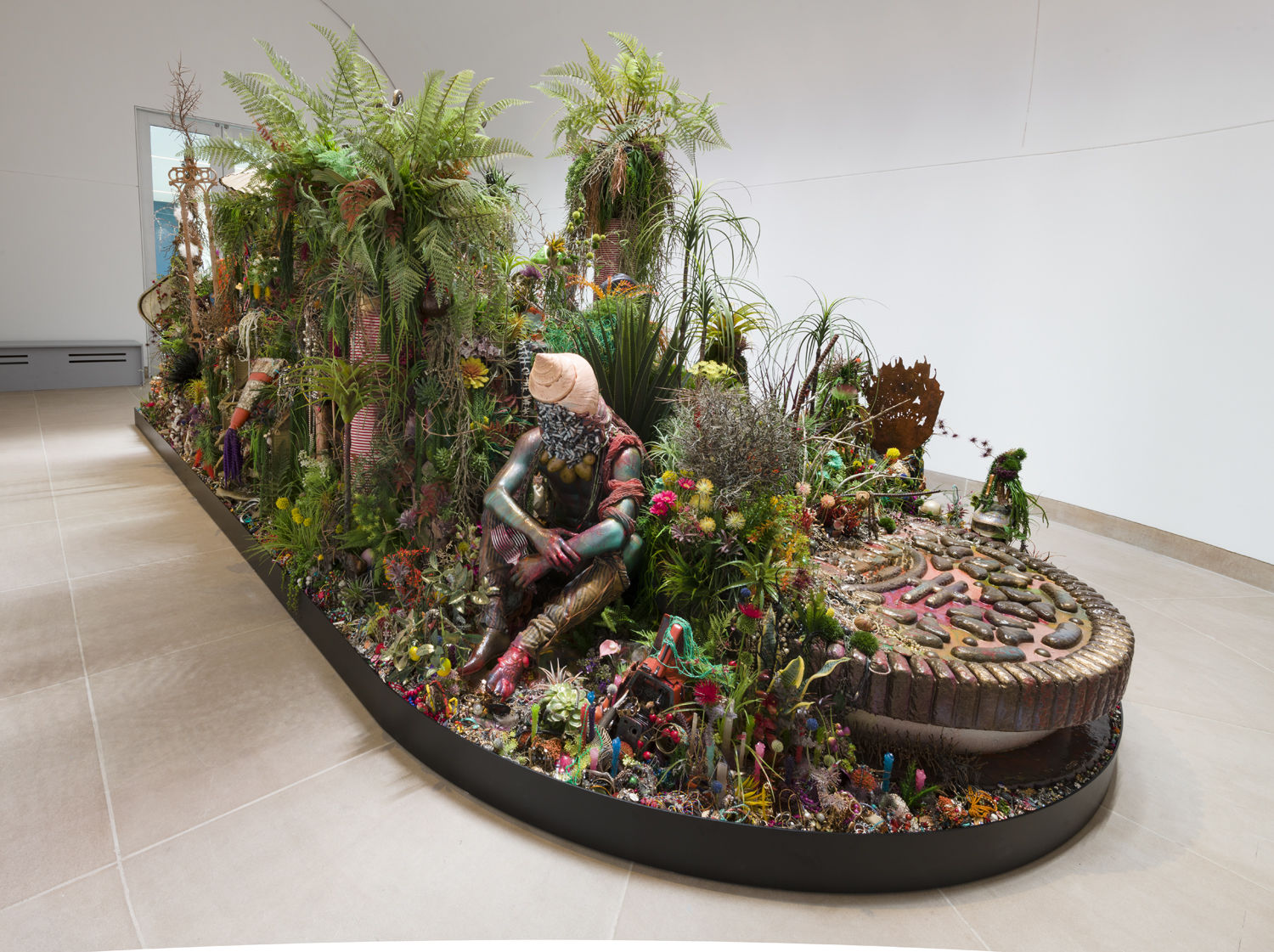
In Max Hooper Schneider’s lush sculptures and installations, his experiences in marine biology and landscape architecture prove to be ever-present influences. His Hammer Projects exhibition at Hammer Museum in Los Angeles is immersive and packed with too many details for one viewing, packed with found objects amassed over several years. The exhibition runs through Feb. 2 at the museum.
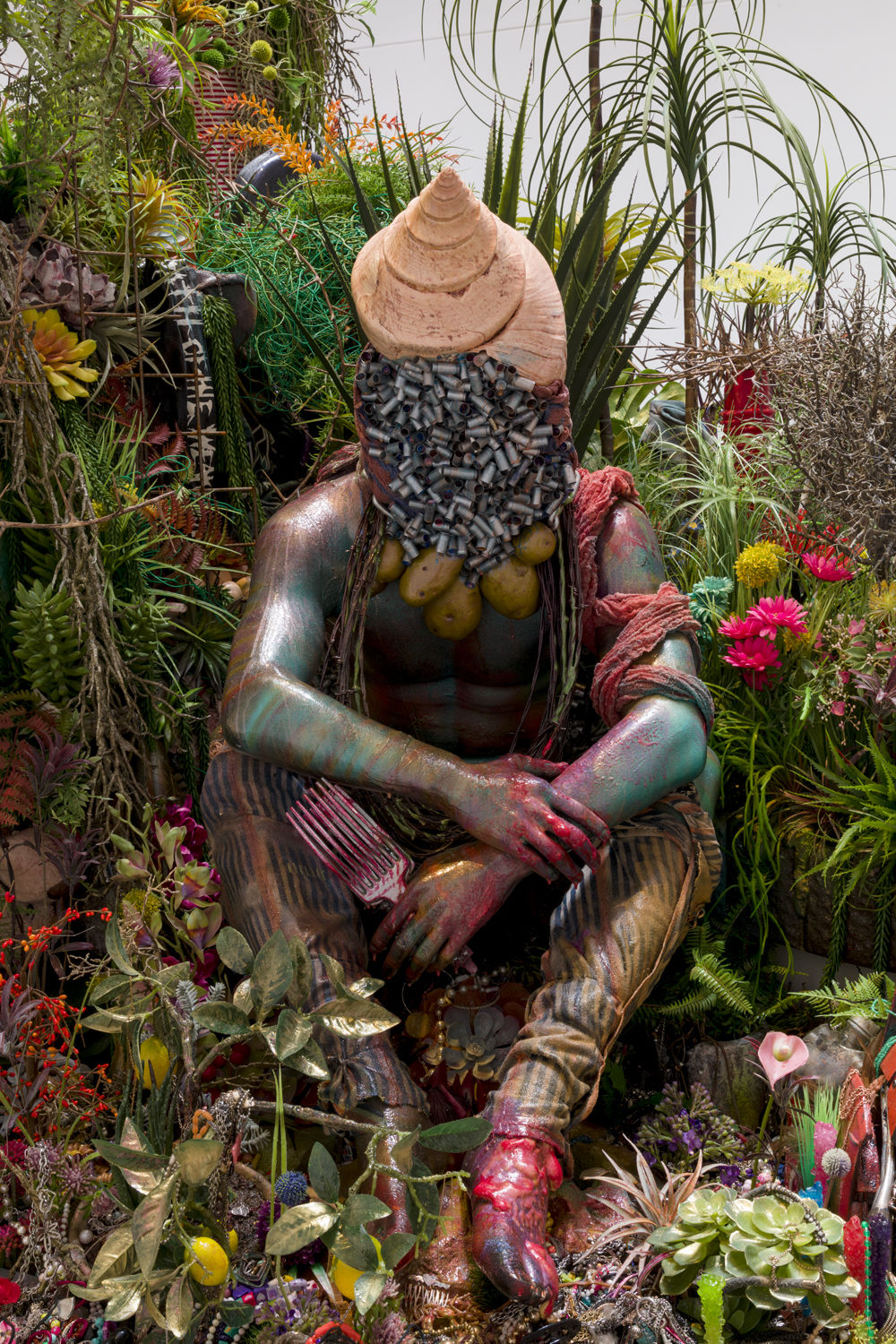
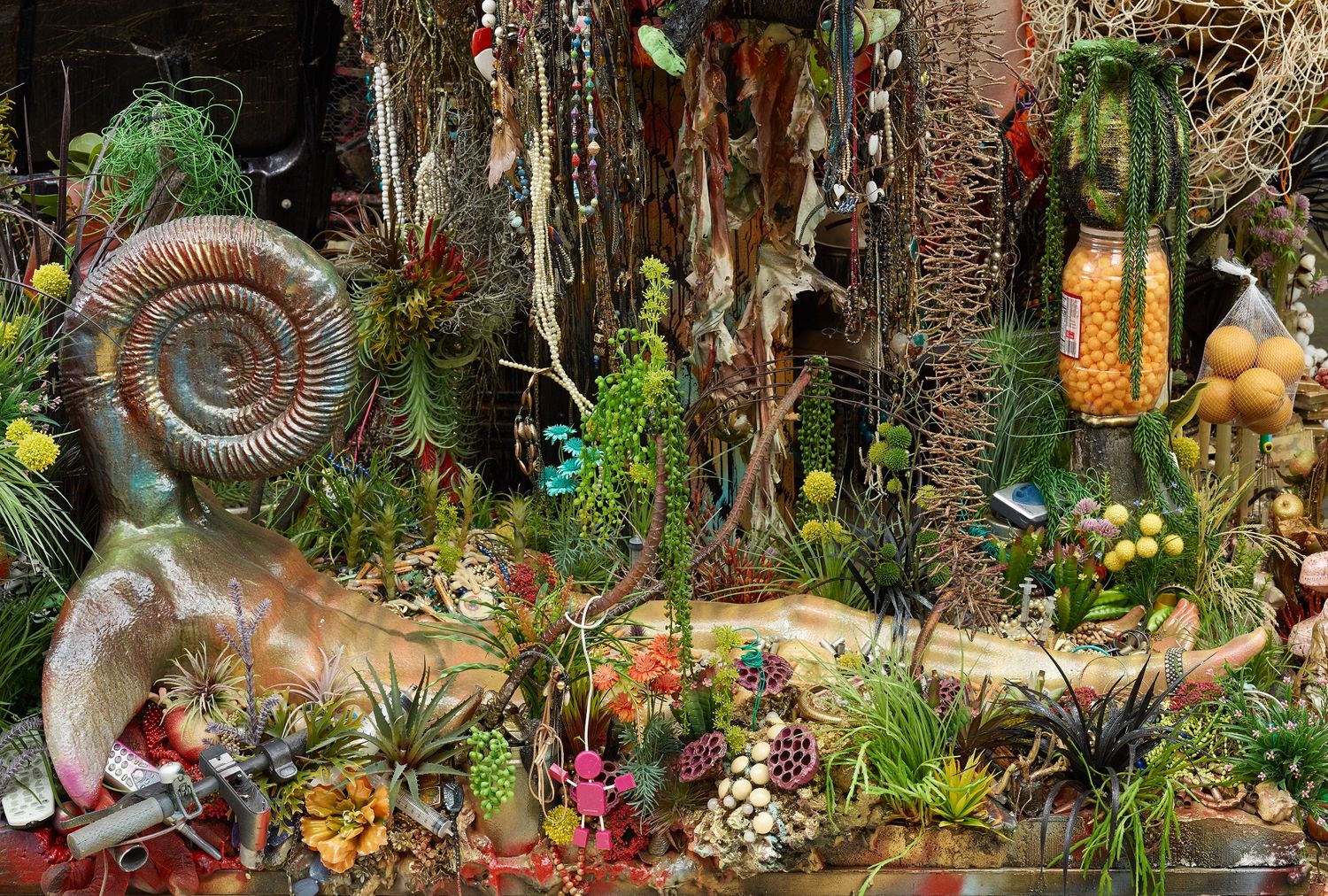
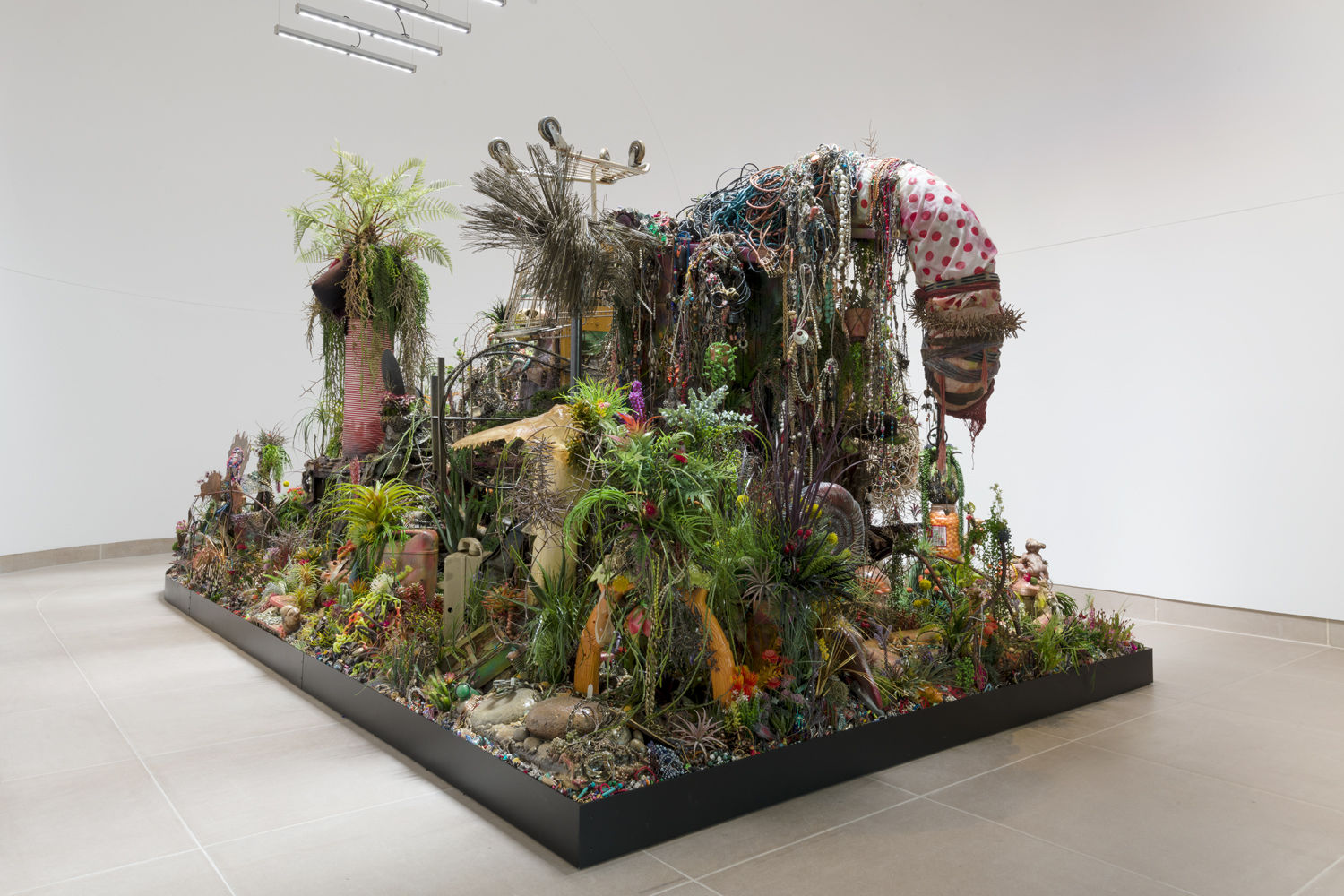
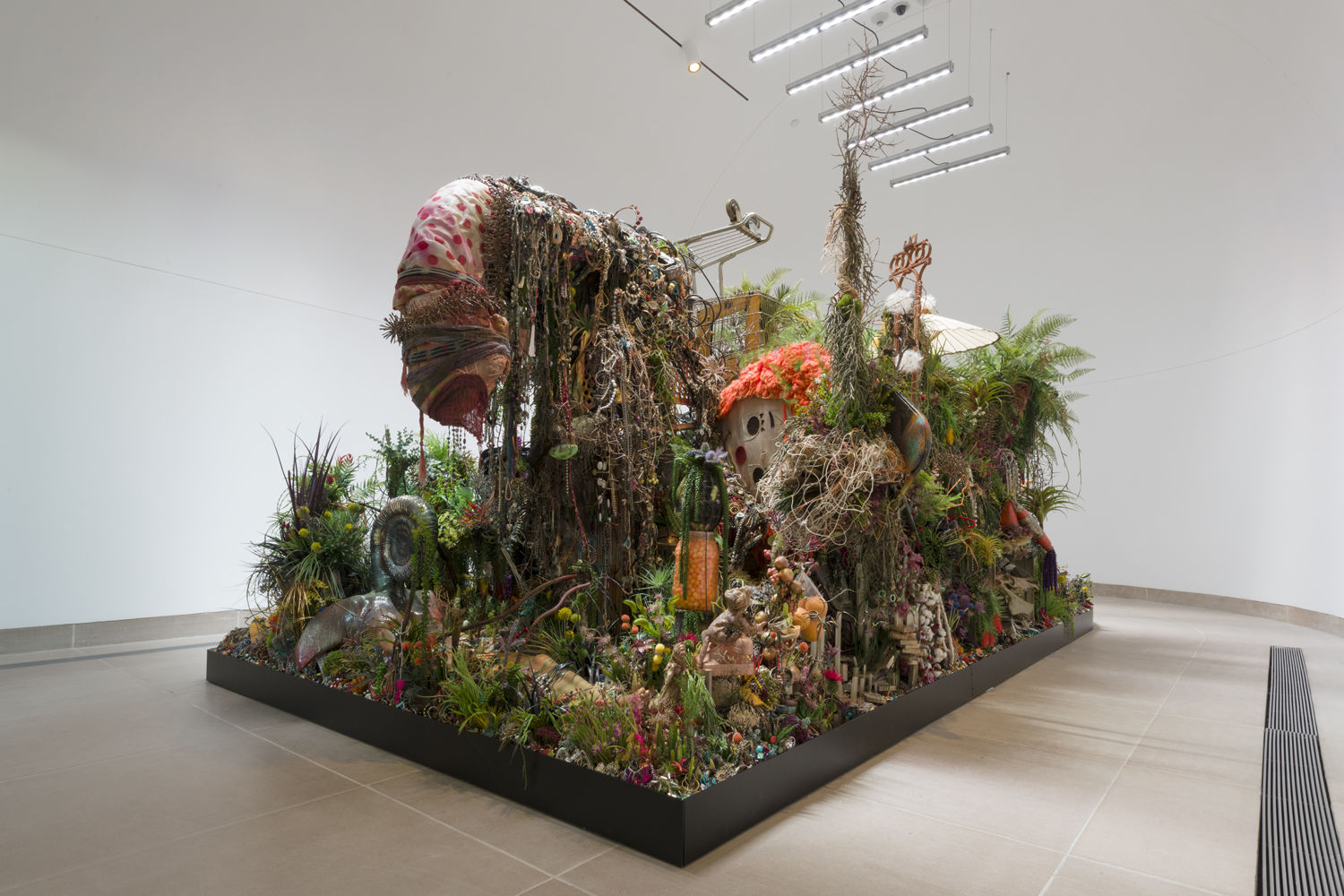
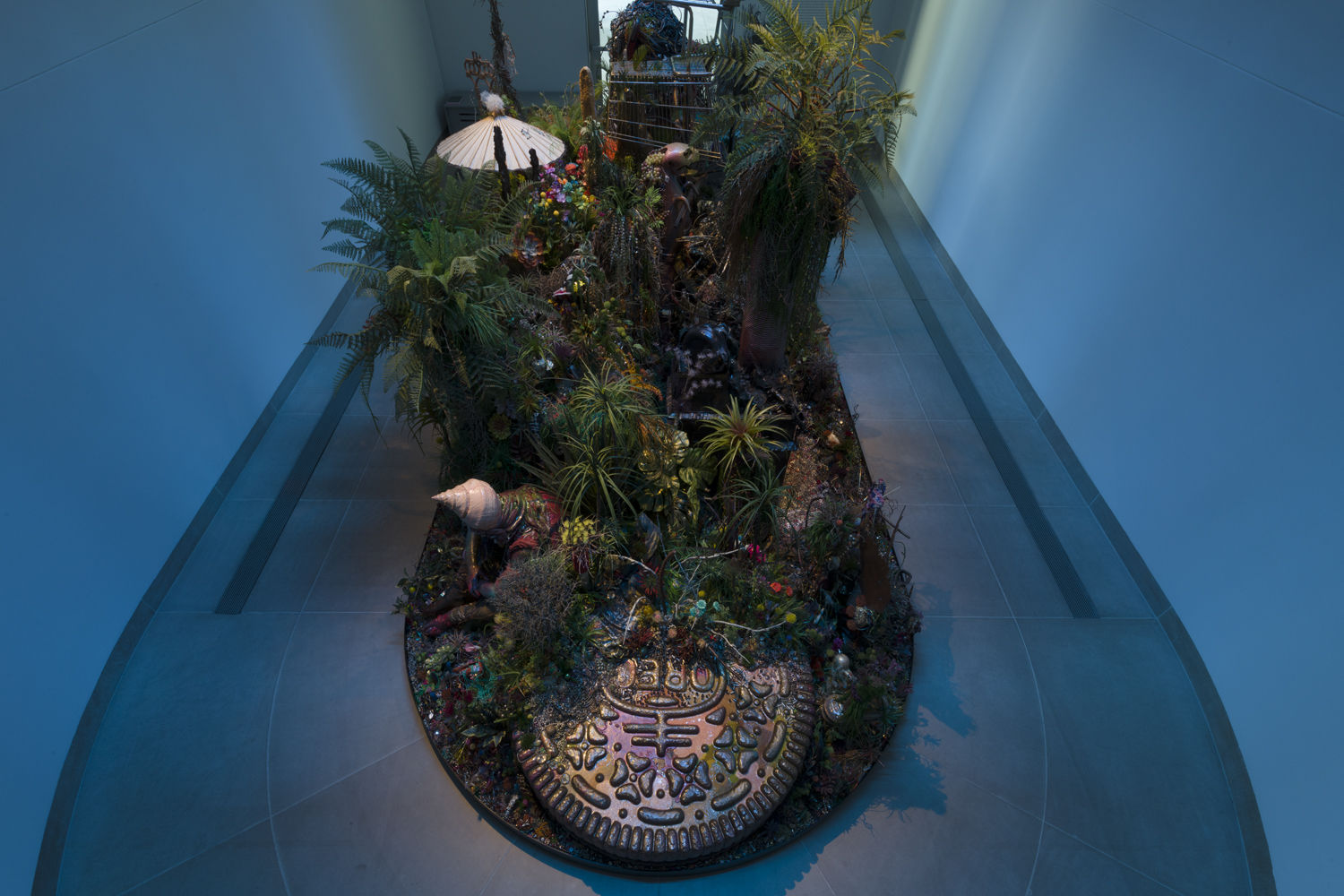
“Artists are often likened to inventors or scientists, and in the case of Max Hooper Schneider the comparison is more than metaphoric,” the museum says. “… Research and scientific investigation are key to his process. He explores the relationships between philosophy and nature, the personal and the political, destruction and construction, and what he calls nonhuman and human agents. Blending his diverse areas of expertise, his idiosyncratic sculptures, installations, and drawings challenge conventional systems of classification, suggesting a worldview that strives to dislocate humans from their assumed position of centrality and superiority as knowers and actors in the world.”
Find more on Hammer Projects’ site.
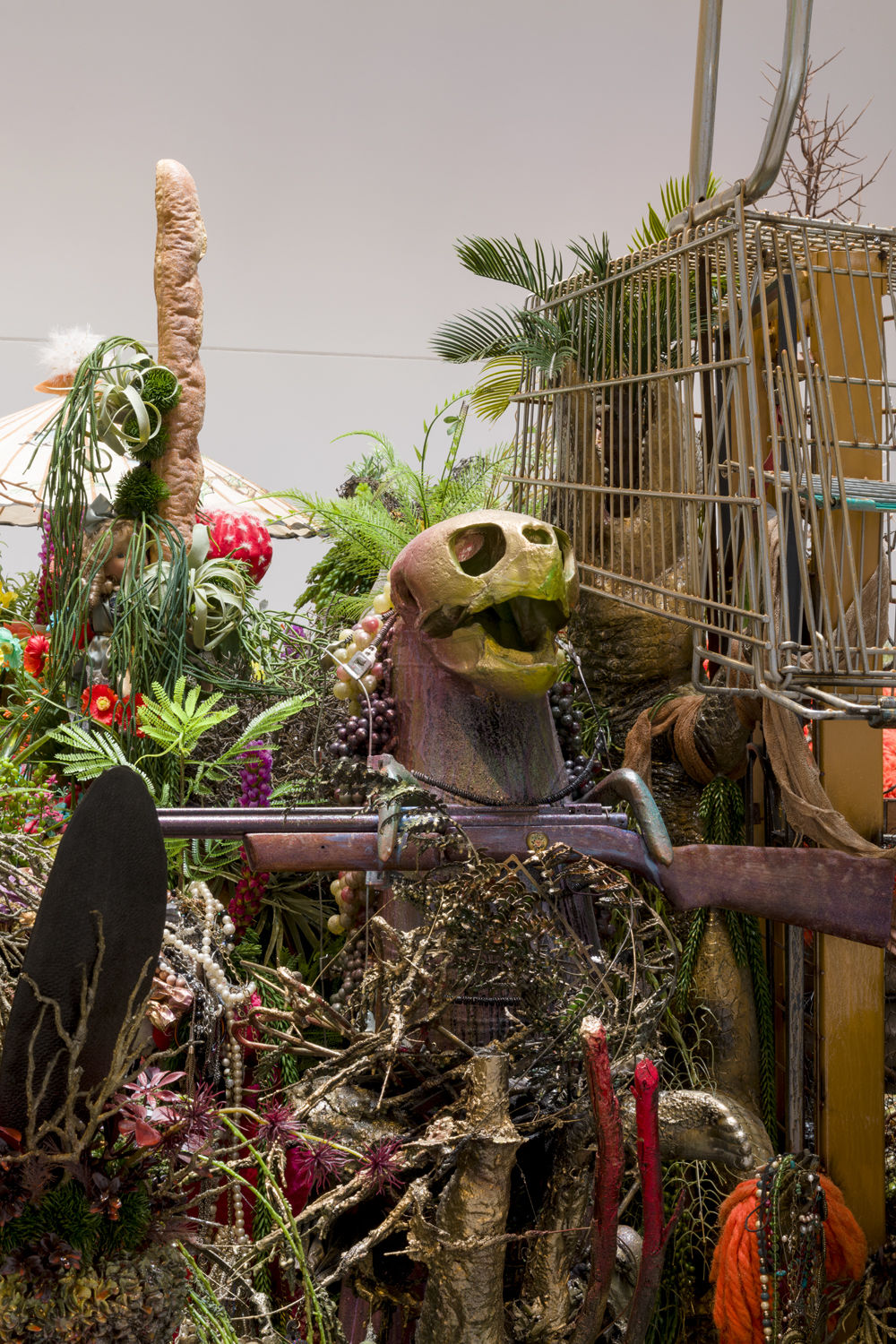
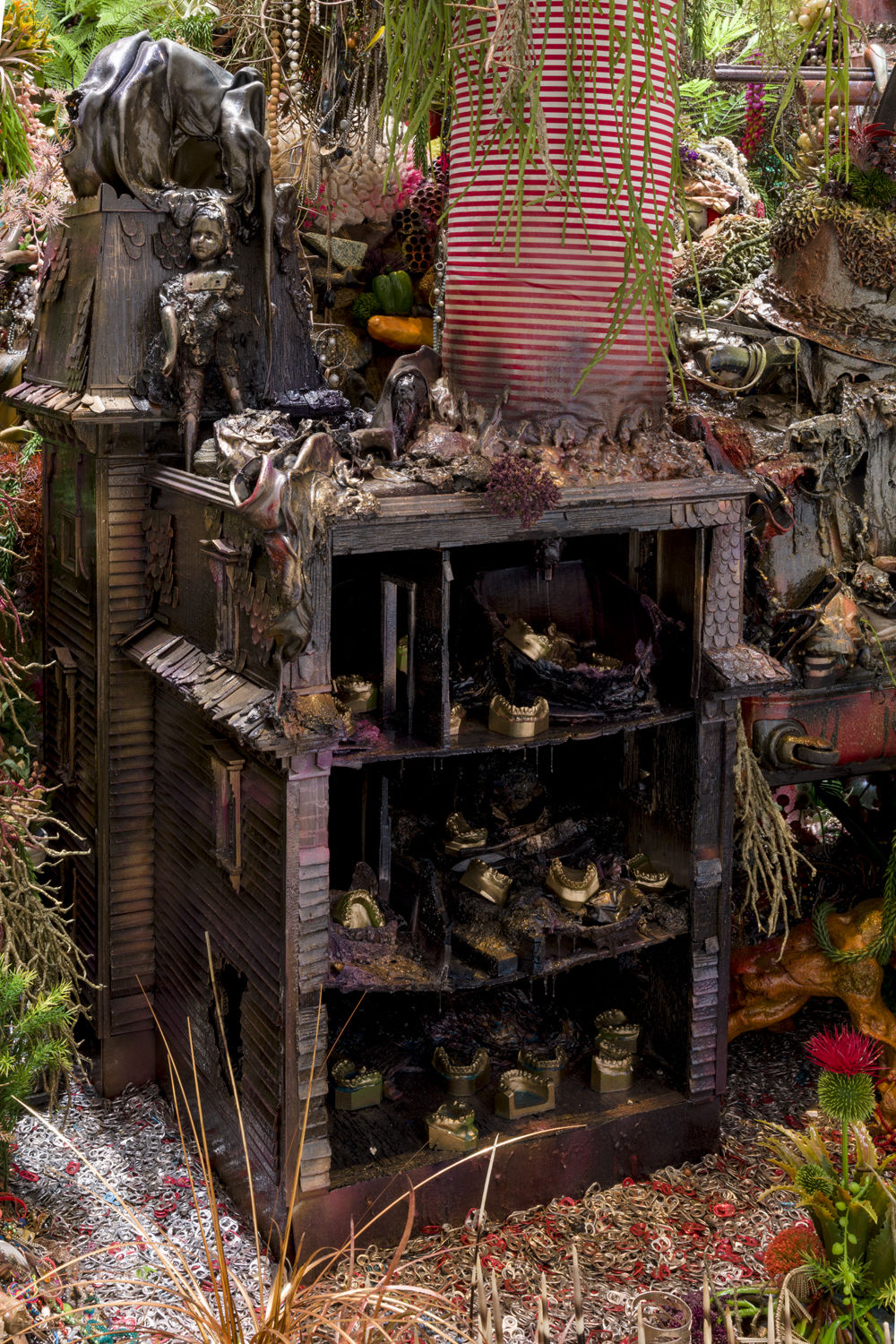
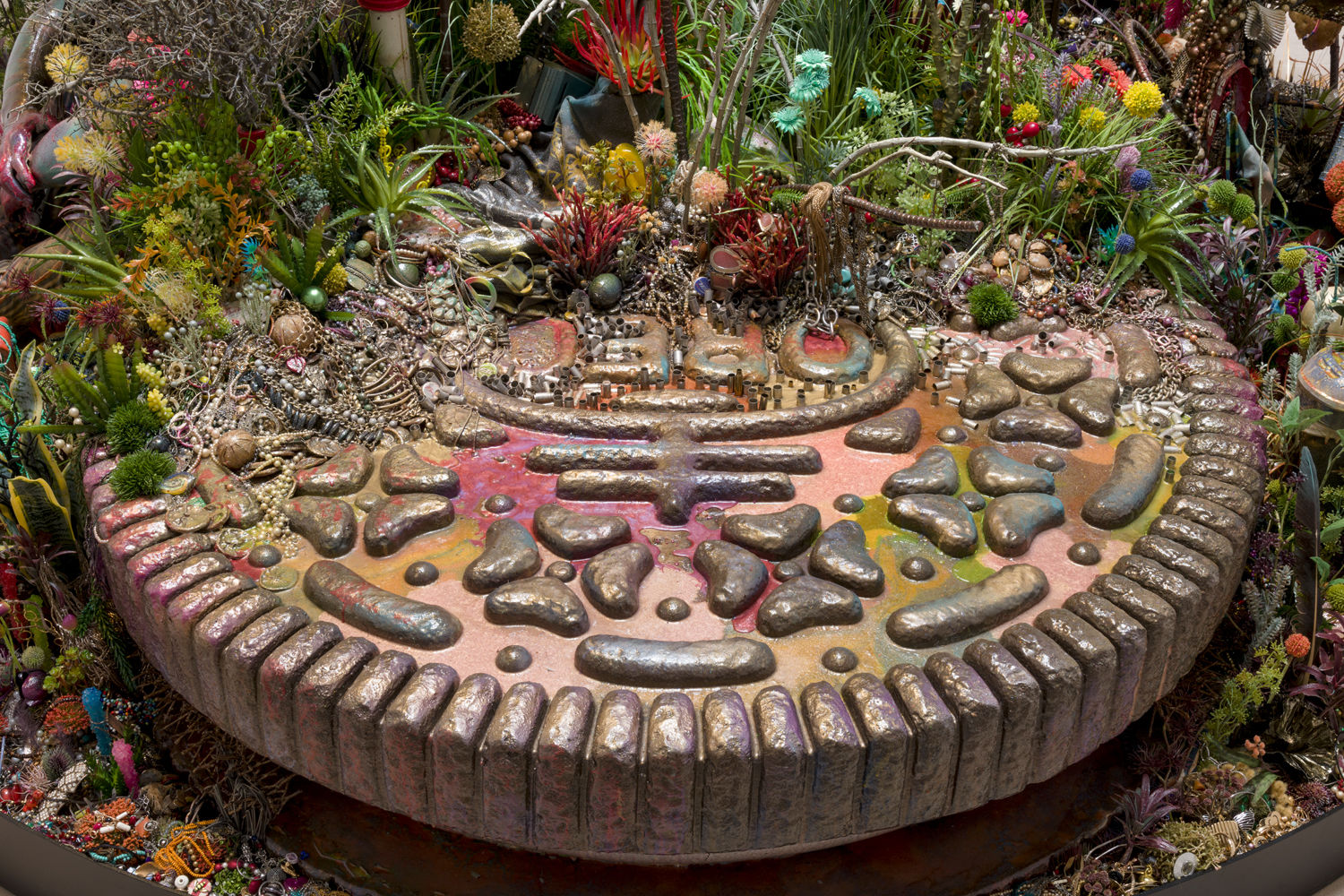




 A new evolution of his menagerie of mutants,
A new evolution of his menagerie of mutants, 
 South African artist Mary Sibande explores race, history, gender, and other social themes, her visceral mixed-media figures constructed from fiberglass, cotton, resin, and other materials. She uses a sculptural representation of herself, Sophie, to also look at her own family’s generational narrative. Her practice also includes photography, integrating the themes of her sculptures and installations.
South African artist Mary Sibande explores race, history, gender, and other social themes, her visceral mixed-media figures constructed from fiberglass, cotton, resin, and other materials. She uses a sculptural representation of herself, Sophie, to also look at her own family’s generational narrative. Her practice also includes photography, integrating the themes of her sculptures and installations. While some sculptors sift through piles of objects in antique stores for materials, British artist
While some sculptors sift through piles of objects in antique stores for materials, British artist